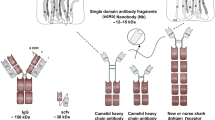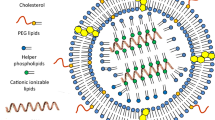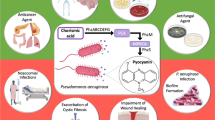Abstract
Phagocytes utilize reactive oxygen species (ROS) to kill pathogenic microorganisms. The source of ROS is an enzymatic complex (the NADPH oxidase), comprising a membrane-associated heterodimer (flavocytochrome b 558), consisting of subunits Nox2 and p22phox, and four cytosolic components (p47phox, p67phox, p40phox, and Rac). The primordial ROS (superoxide) is generated by the reduction of molecular oxygen by NADPH via redox centers located on Nox2. This process is activated by the translocation of the cytosolic components to the membrane and their assembly with Nox2. Membrane translocation is preceded by interactions among cytosolic components. A number of proteins structurally and functionally related to Nox2 have been discovered in many cells (the Nox family) and these have pleiotropic functions related to the production of ROS. An intense search is underway to design therapeutic means to modulate Nox-dependent overproduction of ROS, associated with diseases. Among drug candidates, a central position is held by synthetic peptides reflecting domains in oxidase components involved in NADPH oxidase assembly. Peptides, corresponding to domains in Nox2, p22phox, p47phox, and Rac, found to be oxidase activation inhibitory in vitro, are reviewed. Usually, peptides are inhibitory only when added preceding assembly of the complex. Although competition with intact components seems most likely, less obvious mechanisms are, sometimes, at work. The use of peptides as inhibitory drugs in vivo requires the development of methods to assure cell penetration, resistance to degradation, and avoidance of toxicity, and modest successes have been achieved. The greatest challenge remains the discovery of peptide inhibitors acting specifically on individual Nox isoforms.








Similar content being viewed by others
References
Nauseef WM (2007) How human neutrophils kill and degrade microbes: an integrated view. Immunol Rev 219:88–102
Pick E, Keisari Y (1981) Superoxide anion and hydrogen peroxide production by chemically elicited peritoneal macrophages—induction by multiple non-phagocytic stimuli. Cell Immunol 59:301–318
Nauseef WM (2004) Assembly of the phagocyte NADPH oxidase. Histochem Cell Biol 122:277–291
Groemping Y, Rittinger K (2005) Activation and assembly of the NADPH oxidase: a structural perspective. Biochem J 386:401–416
Mizrahi A, Berdichevsky Y, Ugolev Y, Molshanski-Mor S, Nakash Y, Dahan I, Alloul N, Gorzalczany Y, Sarfstein R, Hirshberg M, Pick E (2006) Assembly of the phagocyte NADPH oxidase complex: chimeric constructs derived from the cytosolic components as tools for exploring structure-function relationships. J Leukoc Biol 79:881–895
Kreck ML, Freeman JL, Abo A, Lambeth JD (1996) Membrane association of Rac is required for high activity of the respiratory burst oxidase. Biochemistry 35:15683–15692
Gorzalczany Y, Sigal N, Itan M, Lotan O, Pick E (2000) Targeting of Rac1 to the phagocyte membrane is sufficient for the induction of NADPH oxidase assembly. J Biol Chem 275:40073–40081
Groemping Y, Lapouge K, Smerdon SJ, Rittinger K (2003) Molecular basis of phosphorylation-induced activation of the NADPH oxidase. Cell 113:343–355
Marcoux J, Man P, Petit-Hartlein I, Vives C, Forest E, Fieschi F (2010) p47phox molecular activation for assembly of the neutrophil NADPH oxidase complex. J Biol Chem 285:28980–28990
Bedard K, Krause K-H (2007) The NOX family of ROS-generating NADPH oxidases: Physiology and Pathophysiology. Physiol Rev 87:255–313
Sumimoto H (2008) Structure, regulation and evolution of Nox-family NADPH oxidases that produce reactive oxygen species. FEBS J 275:3249–3277
Lambeth JD (2007) Nox enzymes, ROS, and chronic disease: An example of antagonistic pleiotropy. Free Rad Biol Med 43:332–347
Molshanski-Mor S, Mizrahi A, Ugolev Y, Dahan I, Berdichevsky Y, Pick E (2007) Cell-free assays: the reductionist approach to the study of NADPH oxidase assembly, or all you wanted to know about cell-free assays but did not dare to ask. In: Quinn MT, DeLeo FR, Bokoch GM (eds) Neutrophil methods and protocols. Humana, Totowa, pp 385–428
Berdichevsky Y, Mizrahi A, Ugolev Y, Molshanski-Mor S, Pick E (2007) Tripartite chimeras comprising functional domains derived from the three cytosolic components p47phox, p67phox and Rac1 elicit activator-independent superoxide production by phagocyte membranes. Role of membrane lipid charge and of specific residues in the chimeras. J Biol Chem 282:22122–22139
Mizrahi A, Berdichevsky Y, Casey PJ, Pick E (2010) A prenylated p47phox–p67phox–Rac1 chimera is a quintessential NADPH oxidase activator. Membrane association and functional capacity. J Biol Chem 285:25485–25499
Nisimoto Y, Jackson HM, Ogawa H, Kawahara T, Lambeth JD (2010) Constitutive NADPH-dependent electron transferase activity of the Nox4 dehydrogenase domain. Biochemistry 49:2433–2442
Fridovich I (1975) Oxygen: boon and bane. Am Sci 63:54–59
Vijg J, Campisi J (2008) Puzzles, promises and a cure for aging. Nature 454:1065–1071
Gutteridge MC, Halliwell B (2010) Antioxidants: molecules, medicines, and myths. Biochem Biophys Res Commun 393:561–564
Cross AR (1990) Inhibitors of the leukocyte superoxide generating oxidase: mechanisms of action and methods for their elucidation. Free Rad Biol Med 8:71–93
Lambeth JD, Krause K-H, Clark RA (2008) NOX enzymes as novel targets for drug development. Semin Immunopathol 30:339–363
Jaquet V, Scapozza L, Clark RA, Krause K-H, Lambeth JD (2009) Small-molecule NOX inhibitors: ROS-generating NADPH oxidases as therapeutic targets. Antioxid Redox Signal 11:2535–2552
Kim J-A, Neupane GP, Lee ES, Jeong B-S, Park BC, Thapa P (2011) NADPH oxidase inhibitors: a patent review. Expert Opin Ther Patents 21:1147–1158
Drummond GR, Selemidis S, Griendling KK, Sobey CG (2011) Combating oxidative stress in vascular disease: NADPH oxidases as therapeutic targets. Nature Rev Drug Discov 10:453–471
Maupetit J, Derreamaux P, Tuffféry P (2010) A fast method for large-scale de novo peptide and miniprotein structure prediction. J Comput Chem 31:726–738
DeLeo FR, Yu L, Burritt JB, Loetterle LR, Bond CW, Jesaitis AJ, Quinn MT (1995) Mapping sites of interaction of p47phox and flavocytochrome b with random-sequence peptide phage display libraries. Proc Natl Acad Sci USA 92:7110–7114
Rotrosen D, Kleinberg ME, Nunoi H, Leto T, Gallin JL, Malech HL (1990) Evidence for a functional cytoplasmic domain of phagocyte oxidase cytochrome b 558. J Biol Chem 265:8745–8750
Park M-Y, Imajoh-Ohmi S, Nunoi H, Kanegasaki S (1997) Synthetic peptides corresponding to various hydrophilic regions of the large subunit of cytochrome b 558 inhibit superoxide generation in a cell-free system from neutrophils. Biochem Biophys Res Commun 234:531–536
Nauseef WM, McCormick S, Renee J, Leidal KG, Clark RA (1993) Functional domain in an arginine-rich carboxyl-terminal region of p47phox. J Biol Chem 268:23646–23651
Leusen JHW, de Boer M, Bolscher BGJM, Hilarius PM, Weening RS, Ochs HD, Roos D, Verhoeven AJ (1994) A point mutation in gp91phox of cytochrome b 558 of the human NADPH oxidase leading to defective translocation of the cytosolic proteins p47phox and p67phox. J Clin Invest 93:2120–2126
Joseph G, Pick E (1995) “Peptide walking” is a novel method for mapping functional domains in proteins. J Biol Chem 270:29079–29082
Rodda SJ, Tribbick G (1996) Antibody-defined epitope mapping using the multipin method of peptide synthesis. Methods 9:473–481
Cochran A (2000) Antagonists of protein–protein interactions. Chem Biol 7:R85–R94
Arkin MR, Wells JA (2004) Small-molecule inhibitors of protein–protein interactions: progressing towards the dream. Nature Rev Drug Discov 3:301–317
Maupetit J, Derreumaux P, Tufféry P. (2009) PEP-FOLD: an online resource for the novo peptide structure prediction. Nucleic Acids Res. doi:10.1093/nar/gkp323
Park M-Y, Imajoh-Ohmi S, Nunoi H, Kanegasaki S (1994) Peptides corresponding to the region adjacent to His-94 in the small subunit of cytochrome b 558 inhibit superoxide generation in a cell-free system from human neutrophils. Biochem Biophys Res Commun 204:924–929
Tsuchiya T, Imajoh-Ohmi S, Nunoi H, Kanegasaki S (1999) Uncompetitive inhibition of superoxide generation by a synthetic peptide corresponding to a predicted NADPH binding site in gp91phox, a component of the phagocyte respiratory oxidase. Biochem Biophys Res Commun 257:124–128
Rodda S (2002) Peptide libraries for T cell epitope screening and characterization. J Immunol Methods 267:71–77
Joseph G, Gorzalczany Y, Koshkin V, Pick E (1994) Inhibition of NADPH oxidase activation by synthetic peptides mapping within the carboxy-terminal domain of small GTP-binding proteins. Lack of amino acid sequence specificity and importance of the polybasic motif. J Biol Chem 269:29024–29031
Chorev M, Goodman M (1995) Recent developments in retro peptides and proteins—an ongoing topochemical exploration. Trends Biotechnol 13:438–445
Morozov I, Lotan O, Joseph G, Gorzalczany Y, Pick R (1998) Mapping of functional domains in p47phox involved in the activation of NADPH oxidase by “peptide walking”. J Biol Chem 273:153435-15444
Dahan I, Issaeva I, Gorzalczany Y, Sigal N, Hirshberg M, Pick E (2002) Mapping of functional domains in the p22phox subunit of flavocytochrome b 559 participating in the assembly of the NADPH oxidase complex by “peptide walking”. J Biol Chem 277:8421–8432
Dahan I, Molshanski-Mor S, Pick E (2012) Inhibition of NADPH oxidase activation by peptides mapping within the dehydrogenase region of Nox2-A "peptide walking" study. J Leukoc Biol 91:501–515
Koshkin V, Pick E (1993) Generation of superoxide by purified and relipidated cytochrome b 559 in the absence of cytosolic activators. FEBS Lett 327:57–62
Alloul N, Gorzalczany Y, Itan M, Sigal N, Pick E (2001) Activation of the superoxide-generating NADPH oxidase by chimeric proteins consisting of segments of the cytosolic component p67phox and the small GTPase Rac1. Biochemistry 40:14557–14566
Sarfstein R, Gorzalczany Y, Mizrahi A, Berdichevsky Y, Molshanski-Mor S, Weinbaum C, Hirshberg M, Dagher M-C, Pick E (2004) Dual role of Rac in the assembly of NADPH oxidase: Tethering to the membrane and activation of p67phox. A study based on mutagenesis of p67phox-Rac1 chimeras. J Biol Chem 279:16007–16016
Csányi G, Cifuentes-Pagano E, Al Gouleh I, Ranayhossaini DJ, Egana L, Lopes LR, Jackson HM, Kelley EE, Pagano PJ (2011) Nox2 B-loop peptide, Nox2ds, specifically inhibits the NADPH oxidase Nox2. Free Rad Biol Med 51:1116–1125
Kreck ML, Uhlinger DJ, Tyagi SR, Inge KL, Lambeth JD (1994) Participation of the small molecular weight GTP-binding protein Rac1 in cell-free activation and assembly of the respiratory burst oxidase - Inhibition by a carboxyl-terminal peptide. J Biol Chem 269:4161–4168
Kleinberg ME, Malech HL, Rotrosen D (1990) The phagocyte 47-kilodalton cytosolic oxidase protein is an early reactant in activation of the respiratory burst. J Biol Chem 265:15577–15583
Uhlinger DJ, Tyagi SR, Lambeth JD (1995) On the mechanism of inhibition of the neutrophil respiratory burst oxidase by a peptide from the C-terminus of the large subunit of cytochrome b 558. Biochemistry 34:524–527
De Leo FR, Ulman KV, Davis AR, Jutila KL, Quinn MT (1996) Assembly of the human neutrophil oxidase involves binding of p67phox and flavocytochrome b to a common functional domain in p47phox. J Biol Chem 271:17013–17020
De Leo FR, Jutila MA, Quinn MT (1996) Charcterization of peptide diffusion into electropermeabilized neutrophils. J Immunol Methods 198:35–49
Rey FE, Cifuentes ME, Kiarash A, Quinn MT, Pagano PJ (2001) Novel competitive inhibitor of NAD(P)H oxidase assembly attenuates vascular O -2 and systolic blood pressure in mice. Circ Res 89:408–414
Biberstine-Kinkade KJ, Yu L, Dinauer M (1999) Mutagenesis of an arginine- and lysine-rich domain in the gp91phox subunit of the phagocyte NADPH-oxidase flavocytochrome b 558. J Biol Chem 274:10451–10457
Jackson HM, Kawahara T, Nisimoto Y, Smith SME, Lambeth JD (2010) Nox4 B-loop creates an interface between the transmembrane and dehydrogenase domains. J Biol Chem 285:10281–10290
Durand D, Vivès C, Cannella D, Pérez J, Pebay-Peyroula E, Vachetter P, Fieschi F (2010) NADPH oxidase activator p67phox behaves in solution as a multidomain protein with semi-flexible linkers. J Struct Biol 169:45–53
Leusen JHW, Bolscher BGJM, Hilarius PM, Weening RS, Kaulfersch W, Seger RA, Roos D, Verhoeven AJ (1994) 156Pro → Gln substitution in the light chain of cytochrome b 558 of the human NADPH oxidase (p22phox) leads to defective translocation of the cytosolic proteins p47phox and p67phox. J Exp Med 180:2329–2334
Shi J, Ross CR, Leto TL, Blecha F (1996) PR-39, a proline-rich antibacterial peptide that inhibits phagocyte NADPH oxidase by binding to Src homology 3 domains of p47phox. Proc Natl Acad Sci USA 93:6014–6018
Katz C, Levy-Beladev L, Rotem-Bamberger S, Rito T, Rudiger SGD, Friedler A (2011) Studying protein - protein interactions using peptide arrays. Chem Soc Rev 40:2131–2145
El-Benna J, Dang PM-C, Perianin A (2010) Peptide-based inhibitors of the phagocyte NADPH oxidase. Biochem Pharmacol 80:778–785
Kleinberg ME, Mital D, Rotrosen D, Malech HL (1992) Characterization of a phagocyte cytochrome b 558 91-kilodalton subunit functional domain: Identification of peptide sequence and amino acids essential for activity. Biochemistry 31:2686–2690
Nakanishi A, Imajoh-Ohmi S, Fujinawa T, Kikuchi H, Kanegasaki S (1992) Direct evidence for interaction between COOH-terminal regions of cytochrome b 558 subunits and cytsosolic 47-kDa protein during activation on O2 − generating system in neutrophils. J Biol Chem 267:19072–19074
Jacobson G, Dourron HM, Liu J, Carretero OA, Reddy DJ, Andrzejewski T, Pagano PJ (2003) Novel NAD(P)H oxidase inhibitor suppresses angioplasty-induced superoxide and neointimal hyperplasia of rat carotid artery. Circ Res 92:637–643
Weaver P, Liu J, Pimentel D, Reddy DJ, Harding P, Peterson EL, Pagano PJ (2006) Adventitial delivery of dominant-negative p67phox attenuates neointimal hyperplasia of the rat carotid artery. Am J Physiol Heart Circ Physiol 290:H1933–H1941
Kao Y-Y, Gianni D, Bohl B, Taylor RM, Bokoch GM (2008) Identification of a conserved Rac binding site on NADPH oxidases supports a direct GTPase regulatory mechanism. J Biol Chem 283:12736–12746
Park L, Zhou P, Pitstick R, Capone C, Anrather J, Norris EH, Younkin L, Younkin S, Carlson G, McEwen BS, Iadecola C (2008) Nox2-derived radicals contribute to neurovascular and behavioral dysfunction in mice overexpressing the amyloid precursor protein. Proc Natl Acad Sci USA 105:1347–1352
Clark RA, Leidal KG, Pearson DW, Nauseef WM (1987) NADPH oxidase of human neutrophils. Subcellular localization and characterization of an arachidonate-activable superoxide-generating system. J Biol Chem 262:4065–4074
Malech HL, Huang C-K, Renfer L, Rotrosen D (1993) Tyrosine-324 of p47phox plays a functional role in cell-free activation of phagocyte NADPH oxidase. Clin Res 41:323A
DeLeo FR, Nauseef WM, Jesaitis AJ, Burritt JB, Clark RA, Quinn MT (1995) A domain of p47phox that interacts with human neutrophil flavocytochrome b558. J Biol Chem 270:26246–26251
Dang PM-C, Stensballe A, Boussetta T, Raad H, Dewas C, Kroviarski Y, Hayem G, Jensen ON, Gougerot-Pocidalo M-A, El-Benna J (2006) A specific p47phox-serine phosphorylated by convergent MAPKs mediates neutrophil NADPH oxidase priming at inflammatory sites. J Clin Invest 116:2033–2043
Cohen JG, Killeen E, Chander A, Takemaru K-I, Larson JE, Treharne KJ, Mehta A (2009) Small interfering peptide (siP) for in vivo examinations of the developing lung interactonome. Dev Dyn 238:386–393
Sigal N, Gorzalczany Y, Pick E (2003) Two pathways of activation of the superoxide-generating NADPH oxidase of phagocytes in vitro—distinctive effects of inhibitors. Inflammation 27:147–159
Marchioni F, Zheng Y (2009) Targeting Rho GTPases by peptidic structures. Curr Pharmacol Design 15:2481–2487
Labadia ME, Zu Y-L, Huang C-K (1996) A synthetic peptide containing a predominant protein kinase C site within p47phox inhibits the NADPH oxidase in intact neutrophils. J Leukoc Biol 59:116–124
Futaki S, Goto S, Sugiura Y (2003) Membrane permeability commonly shared among arginine-rich peptides. J Mol Recognit 16:260–264
Magzoub M, Graslund A (2004) Cell-penetrating peptides: small from inception to application. Q Rev Biophys 34:147–195
Deshayes S, Morris MC, Divita G, Heitz F (2005) Cell-penetrating peptides: tools for intracellular delivery of therapeutics. Cell Mol Life Sci 62:1839–1849
Langel U (ed) (2007) Handbook of cell-penetrating peptides. 2nd edn. CRC, Boca Raton
Fuchs SM, Raines RT (2006) Internalization of cationic peptides: the road less (or more?) traveled. Cell Mol Life Sci 63:1819–1822
Fawell S, Seery J, Daikh Y, Moore C, Chen LL, Pepinsky B, Barsoum J (1994) Tat-mediated delivery of heterologous proteins into cells. Proc Natl Acad Sci USA 91:664–668
Kim DW, Mitchell DJ, Brockstedt DG, Fong L, Nolan GP, Fathman CG, Engleman EG, Rothbard JB (1997) Introduction of soluble proteins into the MHC Class I pathway by conjugation to an HIV tat peptide. J Immunol 159:1666–1668
Cerchietti LC, Yang SN, Shaknovich R, Hatzi K, Polo JM, Chadburn A, Dowdy SF, Melnick A (2009) A peptidomimetic inhibitor of BCL6 with potent antilymphoma effects in vitro and in vivo. Blood 113:3397–3405
Fradin T, Dahan I, Molshanski-Mor S, Mizrahi A, Berdichevsky Y, Pick E (2011) A dithiol–disulfide switch in the cytosolic part of Nox2 controls NADPH oxidase assembly. Eur J Clin Invest 41(Suppl 1):29
Jia H, Lohr M, Jezequel S, Davis D, Shaikh S, Selwood D, Zachary I (2001) Cysteine-rich and basic domain HIV-1 Tat peptides inhibit angiogenesis and induce endothelial cell apoptosis. Biochem Biophys Res Commun 283:469–479
Cardozo AK et al (2007) Cell-permeable peptides induce dose-and length-dependent cytotoxic effects. Biochim Biophys Acta 1768:2222–2234
Lien S, Lowman HB (2003) Therapeutic peptides. Trends Biotechnol 21:556–562
McGregor DP (2008) Discovering and improving novel peptide therapeutics. Curr Opin Pharmacol 8:616–619
Stevenson CL (2009) Advances in peptide pharmaceuticals. Curr Pharm Biotechnol 10:122–137
Vlieghe P, Lisowski V, Martinez J, Khrestchatisky M (2010) Synthetic therapeutic peptides: science and market. Drug Discov Today 15:40–56
Pichereau C, Allay C (2004) Therapeutic peptides under the spotlight. Eur Biopharm Rev 5:1–4
Brandes RP (2003) A radical adventure. The quest for specific functions and inhibitors of vascular NADPH oxidases. Circ Res 92:583–585
Valente AJ, El Jamali A, Epperson TK, Gamez MJ, Pearson DW, Clark RA (2007) NOX1 NADPH oxidase refulation by rgw NOXA1 SH3 domain. Free Rad Biol Med 43:384–396
Fauchere J, Pliska V (1983) Hydrophobic parameters of amino acid side chains from the partitioning of N-acetyl-amino-acid amides. Eur J Med Chem Chim Ther 18:369–375
Acknowledgments
Work in the authors’ laboratory was supported by: Israel Science Foundation grants 428/01, 19/05, and 49/09, the Roberts–Guthman Chair in Immunopharmacology, the Julius Friedrich Cohnheim–Minerva Center for Phagocyte Reserch, the Ela Kodesz Institute of Host Defense against Infectious Diseases, the Roberts Fund, the Milken–Lowell Fund, the Wallis Foundation, the Rubanenko Fund, the Walter J. Levy Benevolent Trust, and the Joseph and Shulamit Salomon Foundation.
Author information
Authors and Affiliations
Corresponding author
Additional information
An erratum to this article is available at http://dx.doi.org/10.1007/s00018-013-1473-3.
Rights and permissions
About this article
Cite this article
Dahan, I., Pick, E. Strategies for identifying synthetic peptides to act as inhibitors of NADPH oxidases, or “All that you did and did not want to know about Nox inhibitory peptides”. Cell. Mol. Life Sci. 69, 2283–2305 (2012). https://doi.org/10.1007/s00018-012-1007-4
Received:
Revised:
Accepted:
Published:
Issue Date:
DOI: https://doi.org/10.1007/s00018-012-1007-4




